【Reflection】
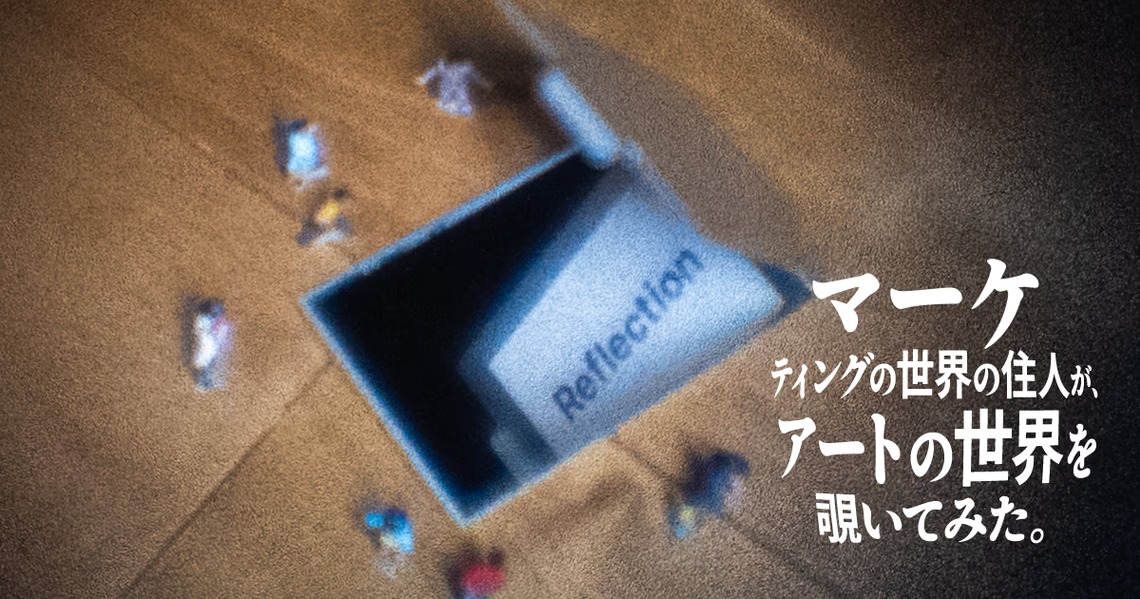
"That exhibition was amazing, wasn't it!"
I shared this casual remark with Maki Hayashida, an artist I've known for years who creates works addressing social issues. I wanted to take this enthusiasm from casual conversation just one step further. I decided to reach out.

The stage is Artizon Museum (Kyobashi, Tokyo).
"ARTIZON" is apparently a coined word combining "ART" and "HORIZON." Visiting in person, you can see very famous works, the kind you've seen in textbooks, in real life, set against a collection of about 3,000 pieces.
The exhibition that sparked our casual conversation with Hayashida-san "Their Aboriginal Art: Australian Contemporary Art" (June 24 - September 21, 2025). To deepen the conversation, we asked Hayashida Maki to serve as the interviewer.
We often hear people say that visiting a museum shakes their values or changes their perspective. The stage for such experiences truly exists just a short walk from Tokyo Station. (Yutaka Miyagawa)

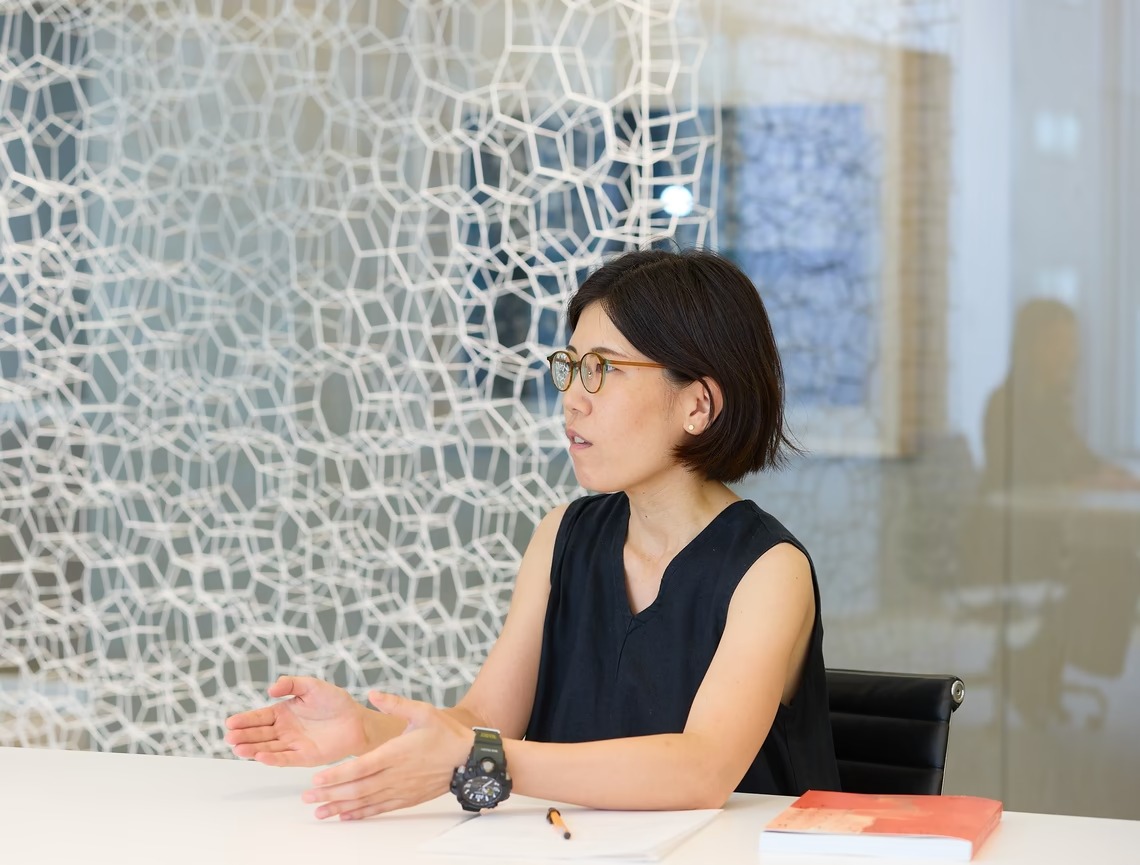
◆
──Before and after seeing this exhibition, what comes to mind when I hear "Aboriginal Art" has completely changed. What exactly does "Aboriginal Art" refer to?
The fundamental premise is that it is the art of Australia's Indigenous peoples. When referred to as "Aboriginal Art," it primarily denotes visual art. There are two aspects: the traditional element and the element reflecting contemporary society. Some artists create works that overlap both aspects, while others focus on one or the other.
The culture of Australia's Indigenous peoples is said to be one of the world's oldest surviving cultural forms. Having no written language, they have woven their culture through artistic and physical expression. The traditional aspect of their culture manifests as art. For example, designs from body painting used in ceremonies become motifs in paintings, or mythological stories from the "Dreaming" are depicted in sand paintings, sometimes becoming the patterns in a painting.
Regarding Aboriginal art as a reflection of contemporary society, it is strongly influenced by the history of Australian society, shaped by its past as a British colony. Contemporary artists re-examine the events experienced by Indigenous people, reconnecting and retelling them as Aboriginal history. They draw inspiration from their daily experiences in modern society—whether positive or negative—and reflect these in their work. I believe the overall picture of Aboriginal art is that it becomes a work embodying both the traditional aspect and the aspect reflecting contemporary society, which is continuous with history.

Nongirunga Malawili, "Borong," 2016, natural ochre on bark, Ishibashi Foundation Artizon Museum.
© the artist ℅ Buku-Larrŋgay Mulka Centre
──How is having an Aboriginal background perceived in Australia?
In Australia, some artist residency programs and fellowships require applicants to have an Aboriginal background. Even for curatorial positions, those with Aboriginal roots may be prioritized. This reflects a focus on valuing the perspective of those directly involved, and also stems from Australia's policy of multiculturalism. Nowadays, there aren't that many people with only an Aboriginal background; I think more people have mixed roots, like European or Asian heritage. Even if someone has multiple roots within themselves, when it comes to choosing which identity to present, quite a few artists opt for their Aboriginal roots.
Additionally, some create works by layering multiple roots—multiple lenses, so to speak—producing fascinating layers. This, I think, is the richness of narrative that art enables. It draws out various stories and incorporates them as elements within a single work. When you visit the region, you find many such artists actively thriving.
──Artizon Museum's Australian art collection is unique in its high proportion of Aboriginal art. I also noticed a strong emphasis on collecting works by female artists. What is the intention behind this?
Contemporary Australian art features a particularly prominent presence of female artists, many of whom have Indigenous backgrounds. As our museum expanded its Australian art collection, works by female artists naturally increased. Today, approximately 70% of the collection is by female artists, all of whom have Aboriginal roots. When we first began collecting Australian art, I believe we started with the simple goal of acquiring good works, without focusing on the artists' gender.
Through research and exhibition activities, we delved deeper into the background and themes of the works, gradually shaping the collection as it exists today. The exhibition "Their Aboriginal Art: Contemporary Australian Art" is a result of these ongoing collection efforts and research.
Iwani Skuase's work "Gouged Earth," displayed in this exhibition, was newly acquired in 2024. Composed of 42 blown glass pieces containing trace amounts of uranium oxide, it addresses the theme of uranium resource mining in Australia and the environmental issues it causes. Uranium, of course, is an element used in nuclear weapons, deeply connected to the British nuclear tests conducted on Skaes' ancestral lands during the Cold War. The tests, conducted from 1956 to 1963, created a situation where people still cannot return to those lands – a history rarely discussed in Australia. Japan is the only nation to have suffered atomic bombings, but through viewing this work, we might also reflect on and empathize with this Australian history. In other words, we don't believe Aboriginal art exists solely for us to accept foreign cultures. Though times and places differ, I believe art possesses the power to transcend such boundaries. The threat of nuclear armament persists globally even now, and I hope that through works like this and exhibitions, we can continue to maintain awareness of these issues.
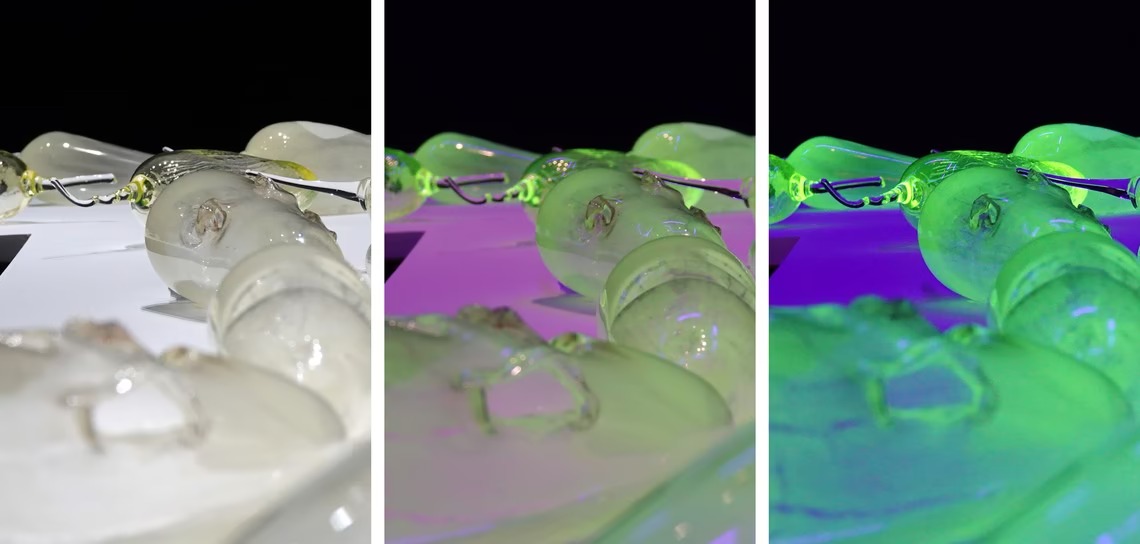
Iwanisukes, "Gouged Earth," 2017, Uranium Glass (free-blown), Ishibashi Foundation Artizon Museum
© Courtesy the Artist and THIS IS NO FANTASY
Another way the collection was utilized in this exhibition was placing Madidinkingertee Juwanda Sari Gabori's "My Grandfather's Country" at the very end. Descending from the 5th to the 4th floor brings visitors into a gallery showcasing the collection, centered on Impressionism and modern Japanese Western-style paintings, plunging them directly into the world of modern works. Gabori's work is abstract painting, so we also intended it to connect well with the fourth floor, hence its placement at the end. Her community originally lacked traditional visual expression, and Gabori herself received no Western art education. Consequently, the imagery in her work is a unique expression emerging from within the artist herself. For those holding fixed notions about what Aboriginal art should be, I believe her work cleanly shatters those preconceptions. Works that liberate us from our preconceptions are also part of our museum's collection.

Starting in October "Jam Session: Ishibashi Foundation Collection × Chikako Yamashiro × Rieko Shiga: Drifted Ashore" is scheduled to open. Jam Session is a project where contemporary artists collaborate with our curators to select works from the museum's collection, presenting them alongside their own pieces in new ways. As part of this, participating artist Chikako Yamashiro selected Ginger Lily Manduwarawara's "Four Archers." This work concretely depicts a land creation myth (Dreaming) narrative. Being able to introduce diverse expressions of Aboriginal art through various museum programs is a benefit of holding such works in our collection.
Furthermore, regarding Australian art, an outdoor sculpture by the artist Lindy Lee is scheduled for completion in January 2026. With parents who immigrated from China, she is an Australian artist of the so-called second generation of immigrants. This work is part of our museum's outdoor sculpture project. Please look forward to it.
──While artists and curators have distinct roles, I believe curators are also "artists" in a broader sense. What do you strive for as a curator, Mr. Ueda?
As a curator, I always remember that I stand on the shoulders of those who came before me. Compared to exhibitions like Impressionism, Aboriginal art exhibitions in Japan are truly few and far between. But the 2008 exhibition of Emily Kama Ingwally, which had a profound impact on me, was made possible by people who worked tirelessly to bring it here. Those who sought to introduce the appeal of Aboriginal art to Japan span generations. Of course, it's true that this field remains relatively unexplored in Japan. But I believe there are museums and researchers steadily working in this area, and I see myself simply continuing their efforts. Similarly, someone might see our Aboriginal art collection, become interested, and decide to organize an exhibition in this field in the future. If this is something that gradually develops and takes root, then I think it's something we need to view over the long term.
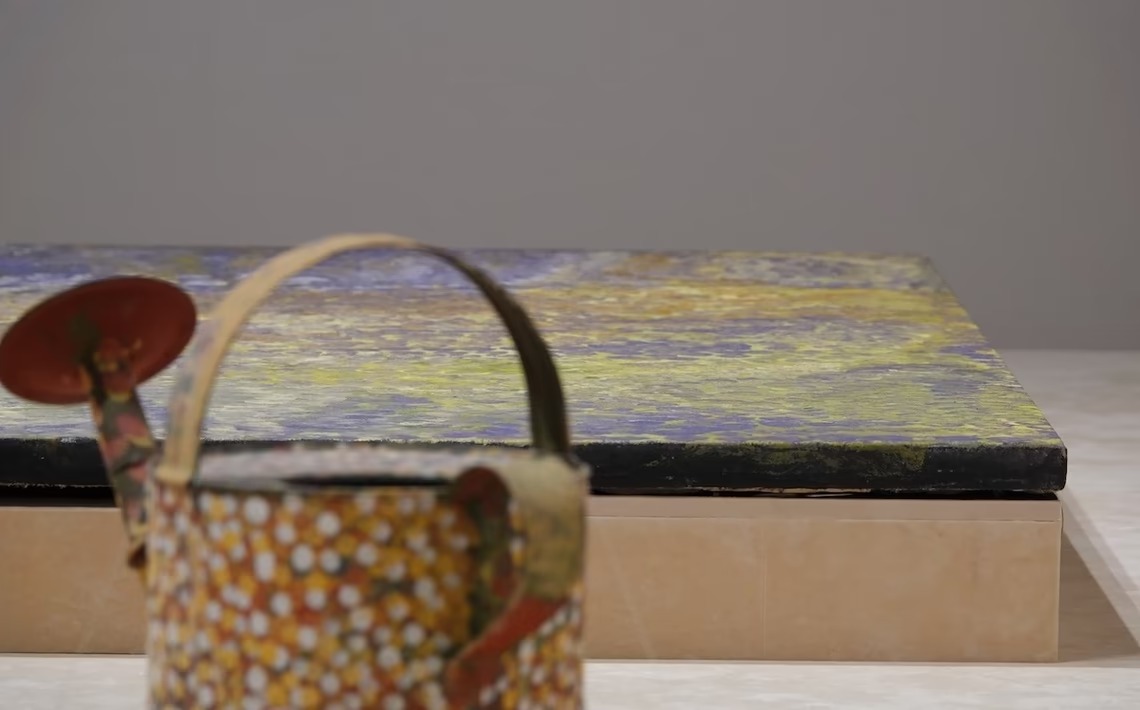
Furthermore, as a curator at a museum with a broad collection, I deepen my knowledge of other fields' collections and engage in exhibition activities. Understanding works from other fields allows me to re-examine my own specialty relatively and provides opportunities to gain new perspectives. On that basis , I strive to do my absolute best within my own expertise—in my case, Australian art. For instance, when I proposed Iwanisukes's "Gouged Earth" as a potential acquisition, the response wasn't necessarily unanimous approval. This was because it marked our museum's first acquisition of Aboriginal art outside of paintings, and the use of glass as a medium was also a new endeavor. Consequently, sharing the work's background and value took longer than usual. We exhibited it for the first time in this show, and now people are saying, "We're so glad we acquired this!" with genuine conviction. I was a bit anxious about whether visitors would just see its simple, beautiful appearance and stop there, or if they'd grasp something deeper. But seeing reactions on social media, quite a few people have understood it profoundly. My honest feeling is that more visitors than I expected have truly engaged with the theme.
──Finally, could you share your thoughts on business professionals engaging with art?
I believe art is part of the society we live in. Beyond art lies society, and within that society, we exist. When you look at art, you see your current self reflected in what lies beyond. Art provides that reflection, helping you see what your current situation is and where you want to go from there.
When considering art for business professionals, it's less about acquiring new knowledge or expanding your business vocabulary, and more about finding something that brings you back to your inner self. Thinking this way, I don't see it as something with such a high barrier to entry. Why not just drop by a museum, engage with the artwork as your authentic self, and have an honest dialogue there? It's a dialogue with the artwork, but beyond that, there's likely a dialogue with yourself. I hope business professionals can come to see art in this light too.
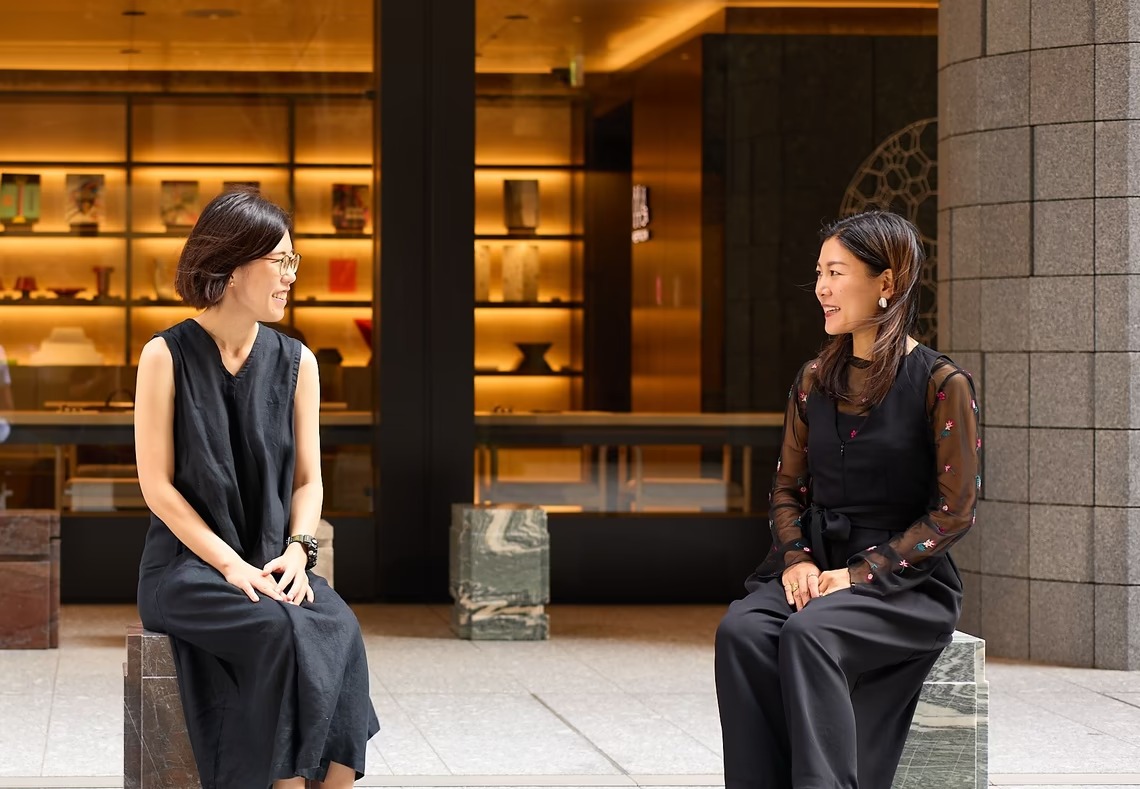
◆
I strongly resonated with the idea that artworks and exhibitions rooted in unfamiliar history, culture, or social issues aren't just about "learning" through them. They invite us to reflect by comparing them to the society and culture we live in. I believe this is the true essence of conveying messages through art. (Maki Hayashida)
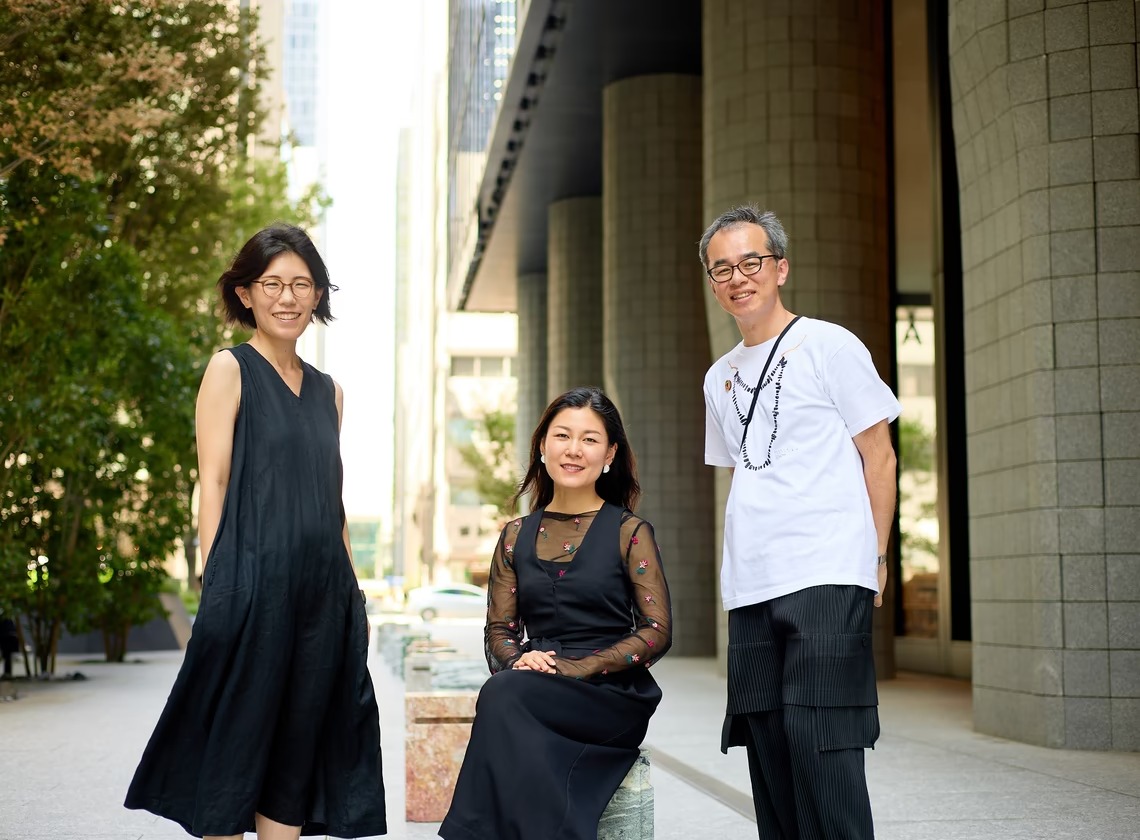
Image Production: Satoshi Iwashita
The information published at this time is as follows.
Was this article helpful?
Newsletter registration is here
We select and publish important news every day
For inquiries about this article
Author

Anna Ueda
Ishibashi Foundation Artizon Museum
Curator, Artizon Museum, Ishibashi Foundation. Graduated from Waseda University, Faculty of Letters, Arts and Sciences, Department of Humanities, majoring in Art History. Completed a Master of Curatorial Studies and Museum Studies at the University of Adelaide Graduate School (Australia). After an internship at the Art Gallery of South Australia, assumed current position.

Maki Hayashida
A Tokyo-based visual artist. Researching social issues surrounding contemporary consumption, she weaves in fiction and subjective speculation to create photographic works using various techniques, primarily expressed as installations centered on photography. Simultaneously, by treating photography as a consumer good, she examines its contradictory relationship with its environment, questioning the materiality and reproducibility of photographic media in the digital age. In recent years, she has focused on photographic techniques utilizing plants and natural materials. Graduated from Kwansei Gakuin University, Faculty of Policy Studies, in 2007. Completed MA Photography at London College of Communication, University of the Arts London, in 2023. Selected for the 17th Shiseido Art Egg.

Yutaka Miyagawa
Dentsu Inc.
After the Great East Japan Earthquake, I began to feel a desire to reflect on Japanese culture and future generations.


